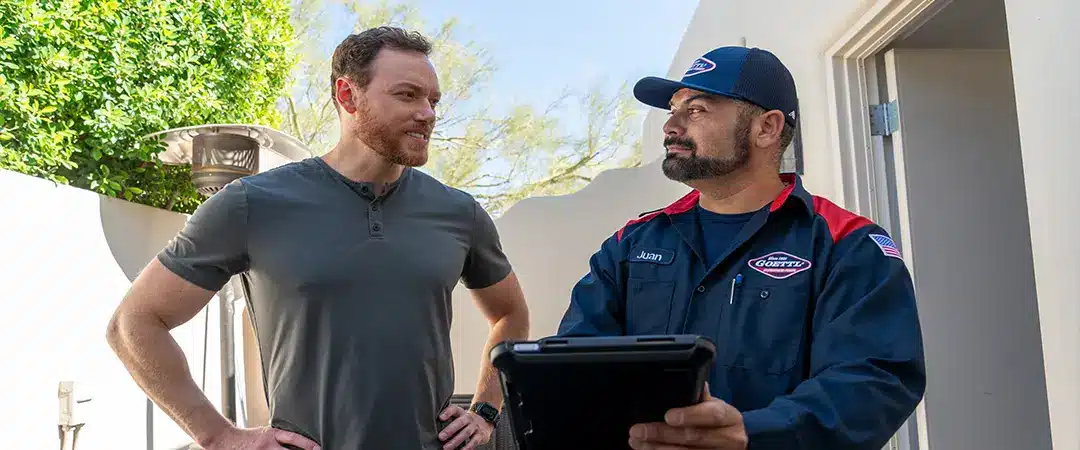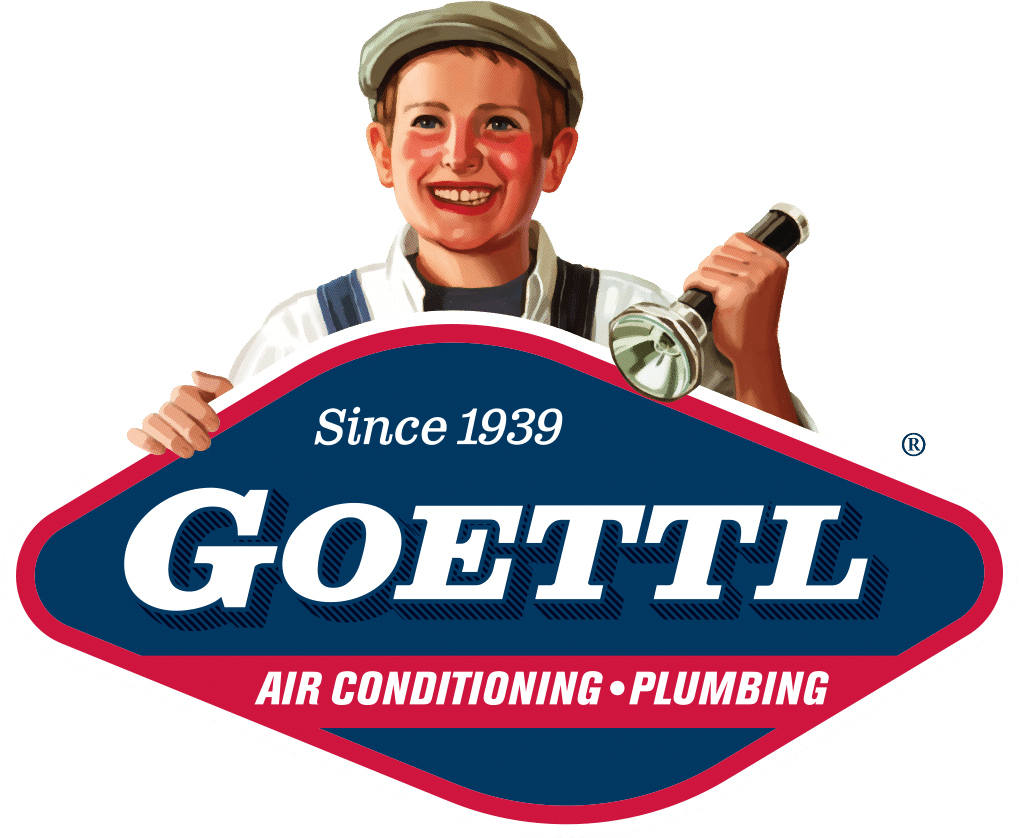
Federal Tax Credits and Rebates for Home Upgrades: Everything You Need to Know
If you upgrade your home’s heating and cooling appliances without knowing the available tax credits, you leave money on the table. The recent Inflation Reduction Act of 2022 (IRA) provides several credits from the federal government to reduce your tax bill for eligible upgrades.
Learn about the IRA and other tax credits and incentives for home improvements, how they can save you money at tax filing time, and how to determine your eligibility.
Understanding the Inflation Reduction Act
President Biden signed the Inflation Reduction Act in 2022, encompassing legislation that reduced prescription drug prices, extended some of the Affordable Care Act, and implemented funding for climate initiatives, including tax credits and rebates for homeowners.
The IRA includes specific tax credits and rebates for homeowners who install new HVAC systems or upgrade their current systems, such as heat pumps. However, there are eligibility requirements and limits.
25C Energy Efficient Home Improvement Credit
The 25C Energy Efficient Home Improvement Credit offers tax credits for qualified energy-efficient improvements to your home. Starting January 1, 2023, homeowners may qualify for a tax credit of up to $3,200 for upgrades made through December 31, 2032.
25C can equal up to 30% of certain eligible expenses, including:
- Qualified energy efficiency improvements installed during the year
- Residential energy property expenses
- Home energy audits
However, the allowable annual credit and the credit for certain types of qualified expenses have limits, which can be confusing.
There’s a maximum allowable credit for each year:
- $1,200 for energy property costs and specific energy-efficient home improvements with a limit of $250 per door, $600 for whole-house window installations, and $150 for energy audits.
- $2,000 annually for qualified heat pumps and biomass stoves, boilers, and ENERGY STAR® air conditioners.
While there are limitations, you can claim the maximum annual credit each year that you’ve made eligible improvements through the end of the 2032 tax year. The credit resets yearly, so you can use it repeatedly for qualifying energy upgrades.
Note that this is a tax credit, which means it’s an amount you can subtract from your tax liability (the taxes you owe). A tax credit only applies if you owe taxes at the end of the year. It’s not a deduction or a refund. You can’t apply the extra amount to a future tax year if there’s a higher credit than your tax liability.
Which Upgrades Are Eligible?
To be eligible, you must be a taxpayer living in a home or apartment and purchase or install the upgrades. The credit only applies to upgrades on existing primary homes, not secondary properties—like rentals—or new construction.
So, if you’re a landlord, you can’t make energy-efficient upgrades to your vacation home or rental properties and take the tax credit. However, different tax credits may apply to upgrades for second homes.
Eligible appliance upgrades include:
- Insulation and air sealing (weatherization): This includes the supplies used to insulate and seal your home against air leaks, such as insulation bats, expanding spray foam insulation, and sealants. According to the Department of Energy, weatherization upgrades have to meet the recommended R-values for your climate zone to be eligible for the upgrade.
- Energy-efficient windows and doors: You can replace your exterior doors and windows with ENERGY STAR® certified doors and windows, but there are limits. You can spend up to $600 of the credit on windows, $500 on doors, and no more than $250 on one door.
- Heating, cooling, and water heating systems: Central air conditioning, heat pumps, and heat pump water heaters (HPWHs) may also be included. Gas, propane, or oil furnaces and water boilers may also be included.
- Energy audits: Energy audits are assessments that determine where you’re losing energy and how to optimize your home for maximum energy efficiency with tailored solutions. This is an important step in determining the best way to maximize your spending on upgrades, and you can apply $150 of your credit toward a professional audit.
Remember to upgrade HVAC appliances that meet the highest energy efficiency standards, which generally means ENERGY STAR® certified appliances.
How to Apply for 25C Tax Credit
Getting a 25C properly credited to your taxes can be complicated, so working with a tax professional is best. The general process includes:
- Install qualifying upgrades to your home.
- Keep your receipts and documentation for the upgrades. Include what you purchased and installed, who installed it, and how much it cost. Retain copies for your records.
- Tell your tax professional you plan to use the 25C tax credit. This can help you plan your tax filing.
25C tax credits are filed using IRS Form 5695.
Rebate Programs
Tax credits like 25C require taxes owed for homeowners to cash in, but it doesn’t matter if you owe or get a refund to take advantage of tax rebates. Here are some rebate programs for homeowner energy-efficiency upgrades:
Home Energy Performance-Based, Whole House Rebate (HOMES) Rebate Program
The Home Energy Performance-Based, Whole House Rebate (HOMES) Rebate program is intended to help homeowners save on energy bills with point-of-sale rebates for eligible home weatherization and electrification improvements. Some eligible rebates include air sealing, insulation, heat pump HVAC systems, and HPWHs, which you’ll receive when you purchase.
For example, a qualifying rebate would replace a dated HVAC system with a mini-split heat pump system. Homeowners can claim up to $2,000—or 30% of the cost—toward purchasing and installing the heat pump and any necessary electrical upgrades.
State-based programs under HOMES offer low- and moderate-income households rebates of up to $8,000 on heat pump installation and $4,000 on electrical upgrades.
Home Electrification and Appliance Rebate (HEAR)
The Home Electrification and Appliance Rebate (HEAR) incentive program is a $4.3 billion program part of IRA that assists homeowners with rebates at the time of sale, not with a mail-in rebate or a rebate at tax time. Instead, the rebate is applied at purchase, offering $8,000 to lower the purchase price for heat pumps used for home heating and cooling.
In addition to heat pumps, heat pump HVAC systems, and HPWHs, the program may include qualified electrification programs like electric stoves and cooktops, air sealing and insulation, wiring and ventilation, and some purchase and installation costs.
Like HOMES, HEAR is intended for low—to moderate-income homeowners. If your income falls below 80% of the median income in your area, the program may cover up to 100% of the electrification costs. If your income falls between 80% and 150% of your area’s median income, you may receive up to 50% of the costs. Both programs are capped at $14,000.
HOMES and HEAR can vary based on household income, the type of upgrade and its efficiency, and your state’s rules and requirements. The specifics are up to each state and may be first come, first serve, or random, so it’s best to plan early to get your rebates when the programs are implemented in your state.
How to Maximize Your Tax Credit
Though it flew under the radar, the IRA and 25C tax credits and the energy-efficiency rebates greatly expanded the benefits for eligible homeowners. The credits and rebates do have qualifying appliances and limits, so it’s best to plan your upgrades to ensure you get the most out of them.
- Make sure your home is airtight. Air leaks and damaged insulation are responsible for up to 45% of energy waste in your home. There’s little point in upgrading to a new energy-efficient HVAC system if you only lose your heated or cooled air from leaks.
- Upgrade your HVAC to an energy-efficient heat pump. These systems are far more energy-efficient than conventional ones and can replace heating and air conditioning in one unit. Heat pumps also dehumidify and filter your home and work with existing ductwork. If you prefer ductless, heat pumps can provide zoned heating for more personalized comfort. Heat pumps can have high upfront costs, but with the available tax credit, now is the time to upgrade.
- Look into state incentives and rebates. IRA is a federal program, but individual states may offer additional incentives and rebates that you can combine with federal incentives. Consider your options and plan your upgrade strategy with a tax professional and an HVAC professional to maximize the savings.
Upgrade Your Home with Energy-Efficient Appliances for Energy and Tax Savings
With sweeping legislation like the IRA and 25C tax credit, now’s the time to upgrade your home’s appliances to enjoy a tax break and long-lasting energy efficiency savings.
Are you unsure what’s best for you? Goettl Air Conditioning can help! Contact us to discuss your home’s energy-efficient upgrades!
The factual information regarding IRA 25C and 3C-REN programs is for educational purposes only. Consult with a tax professional for personalized advice regarding your eligibility and incentives. Goettl is not responsible for the rebate amount customers may receive.








































































































































































































